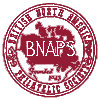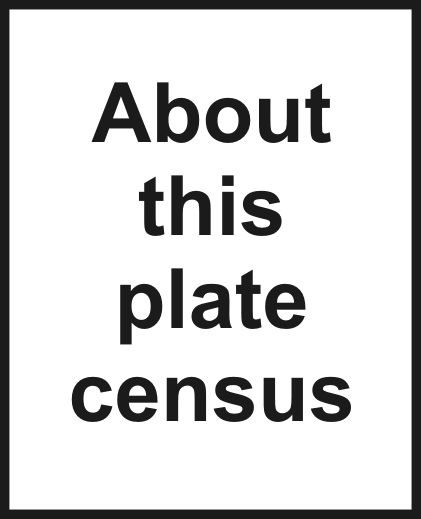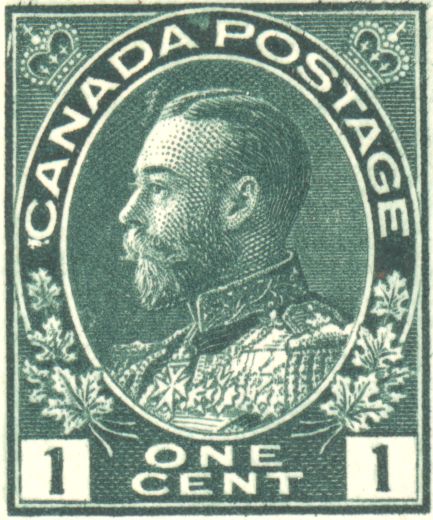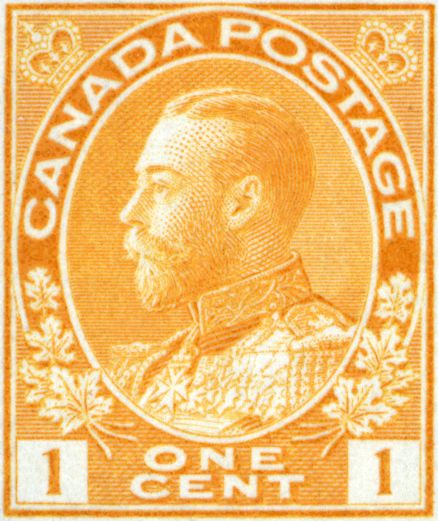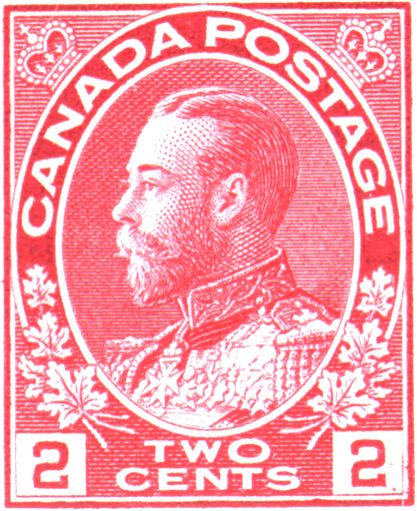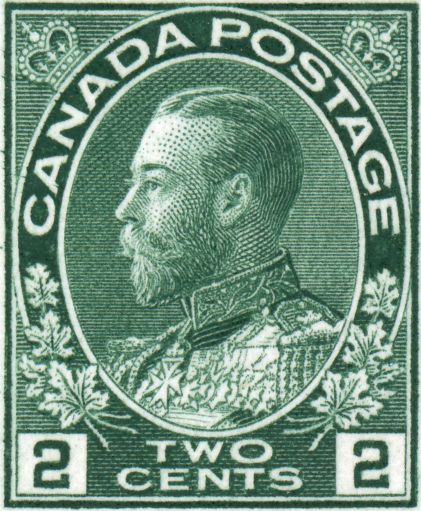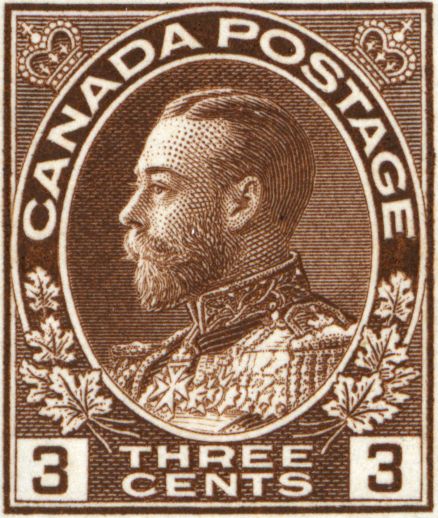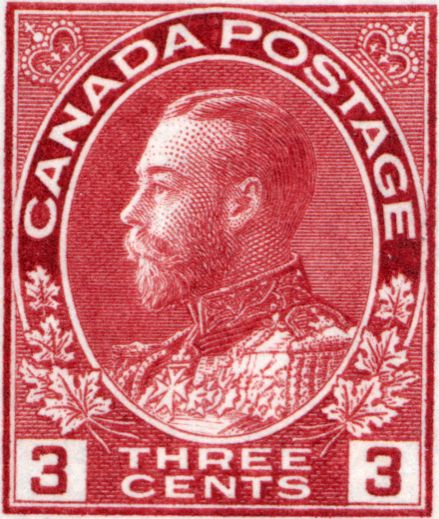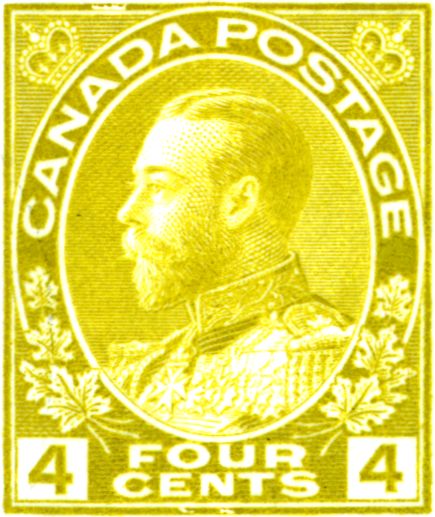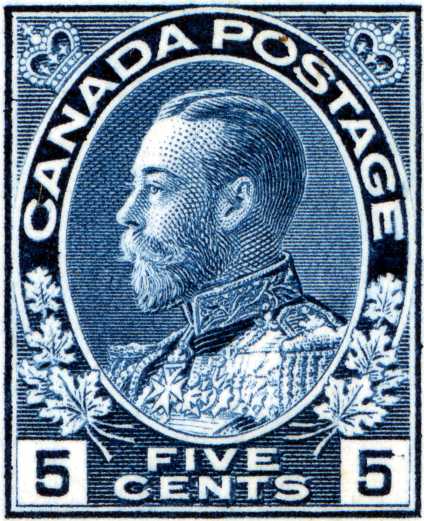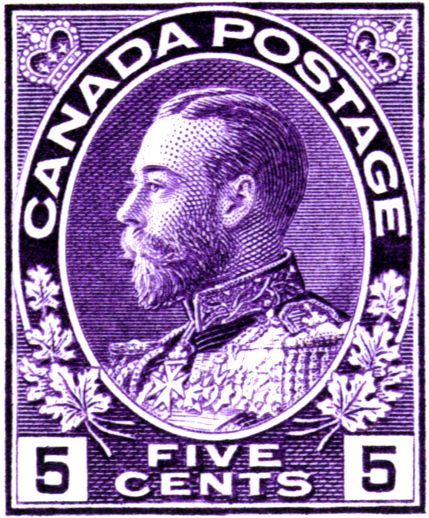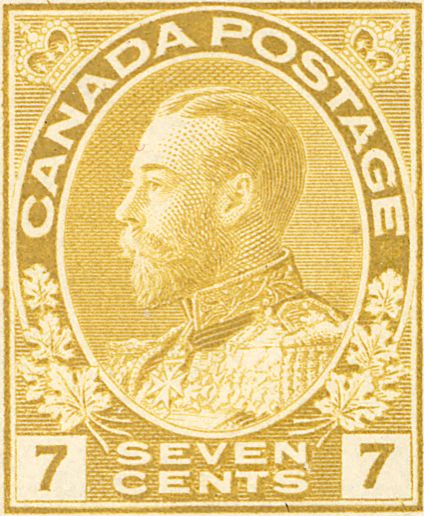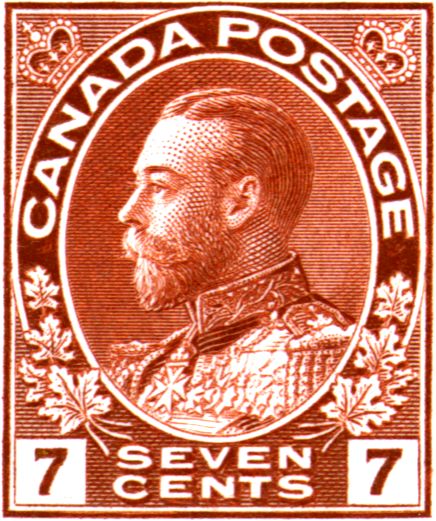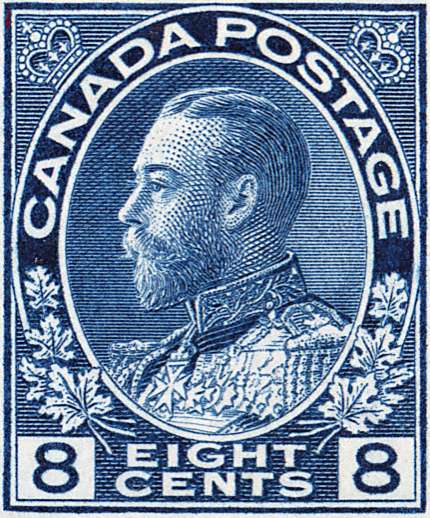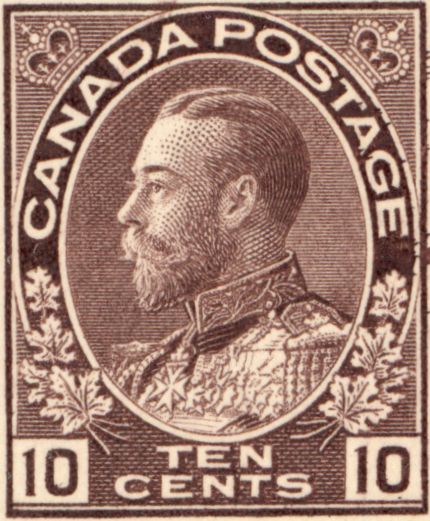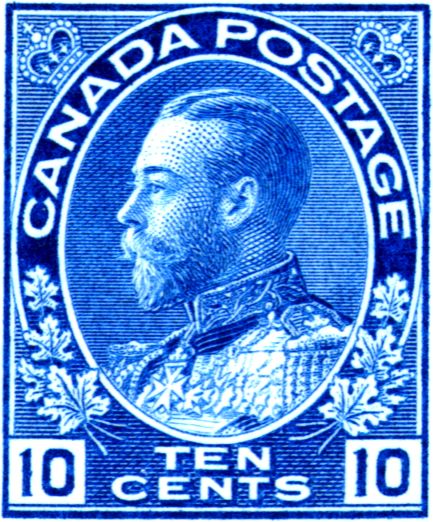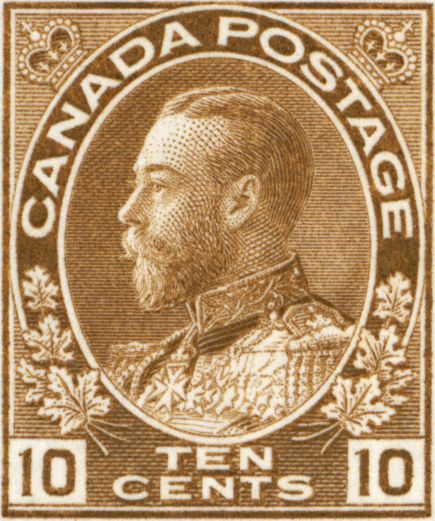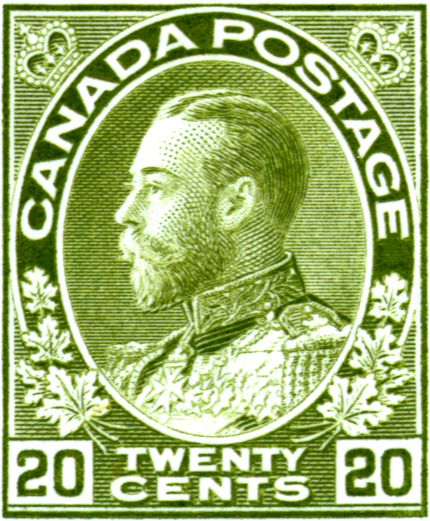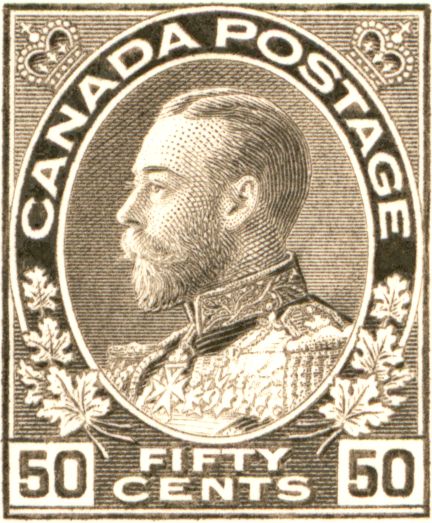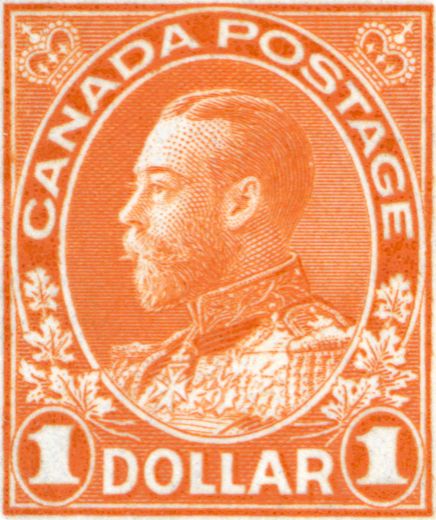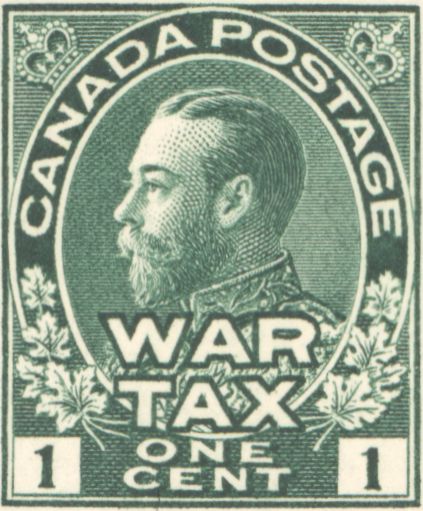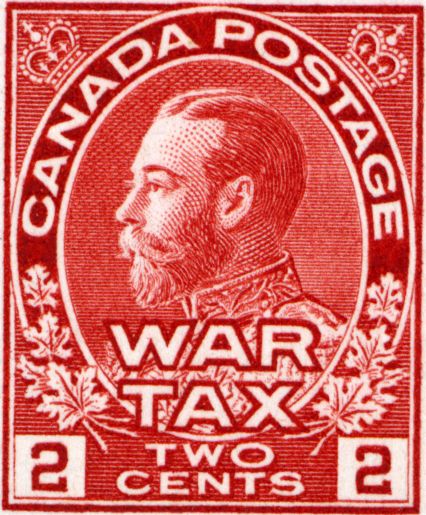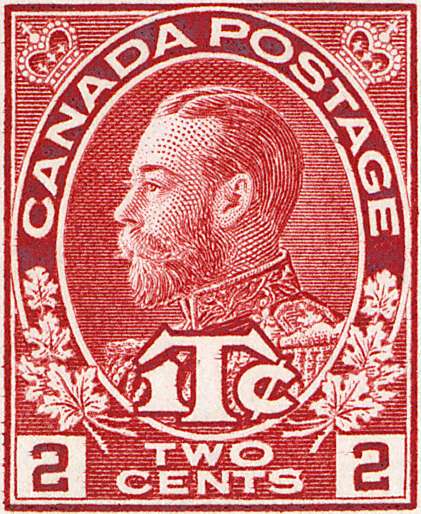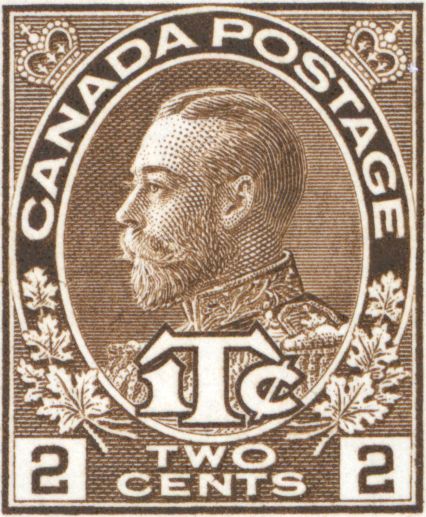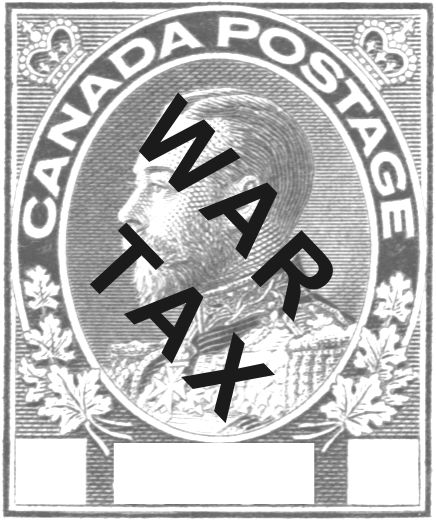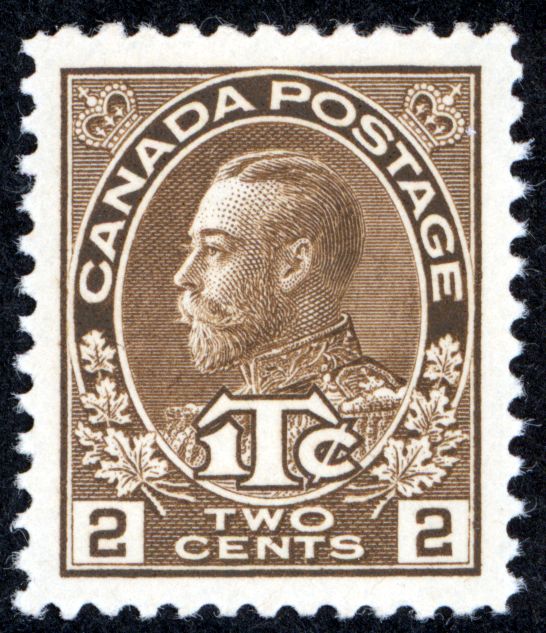
In column 2 of the table, the heading "PO" stands for Printing Order. Beginning in February 1911, near the end of the KE VII period, until March 1915, the printing order number was hand punched on the plate, usually near the plate imprint. In March 1915, it was engraved on the plate in the pane selvedge above and/or below column 9 or 10. If a plate was used for more than one printing order, the old number was defaced and the new one punched in. In the table, only the number that is not defaced is listed.
Beginning with the 2¢ carmine in November 1915, the "printing order number" consisted of a number that indicated the stamp denomination and issue format (sheet, coil, or booklet) and one or two letters that indicated the printing order. The number did not change and the letters were not defaced. The PO column of plates with this new numbering scheme is greyed out.
In the three "Upper" and "Lower" columns, the size of each item is indicated by a letter and number. The letter indicates the configuration:
- ► S = Strip
- ► B = Block
The number following the letter is the number of stamps in the strip or block. If there are multiple items of the same size, the size is in parentheses, and the number preceding the parentheses is the number of items. For example, 4(B8) indicates that there are four blocks of 8 of a certain item. S1 indicates a "strip" consisting of a single stamp. B100 is a complete pane.
A grey cell indicates that the item does not exist. A light blue cell indicates that no material from the plate was reported in this census.
| Plate | PO | Wet Dry |
Total | Upper | Upper Left | Upper Right | Lower | Lower Left | Lower Right |
|---|---|---|---|---|---|---|---|---|---|
| 1 | W | 4 | S2 | S3 | S3,B20 | ||||
| 2 | W | 3 | B4 | S3,B20 | |||||
| 15 | W | 3 | S2,S3 | S10 | |||||
| 16 | W | 2 | S10 | B20 | |||||
| 17 | W | 7 | S2,B4,B6 | 2(S10) | S2 | B20 | |||
| 18 | W | 2 | S3,S10 | ||||||
| 19 | W | 7 | 3(S2) | S10 | S10 | S2 | S3 | ||
| 20 | W | 3 | S4,2(S10) | ||||||
| 21 | W | 1 | B20 | ||||||
| 22 | W | 3 | S3 | S3 | B20 | ||||
| 23 | W | 3 | S2 | B20 | S3 | ||||
| 24 | W | 2 | S3 | B20 | |||||
| 25 | W | 2 | B20 | S4 | |||||
| 26 | W | 3 | S3 | B20 | S4 | ||||
| 27 | W | 3 | S4,S10,B6 | ||||||
| 28 | W | 2 | S2 | S10 | |||||
| 29 | W | 1 | B20 | ||||||
| 30 | W | 1 | B20 | ||||||
| 31 | W | 8 | S3,S10 | S4 | 2(S2),B10 | B6,S10 | |||
| 32 | W | 3 | B20 | S10,B20 | |||||
| 33 | W | 3 | B20 | B8 | S10 | ||||
| 34 | W | 4 | B20 | S10 | S4,S10 | ||||
| 35 | W | 4 | 2(S10) | S4 | S10 | ||||
| 36 | W | 3 | B20 | S10,B6 | |||||
| 37 | W | 3 | S2 | B20 | S10 | ||||
| 38 | W | 4 | S4,B20 | S10 | S2 | ||||
| 39 | W | 5 | S10 | B4,B10,B20 | S3 | ||||
| 40 | W | 4 | S4 | B20 | B4 | S10 | |||
| 41 | W | 4 | S2 | S4,S10 | S10 | ||||
| 42 | W | 4 | S4,S10 | S4 | S10 | ||||
| 43 | W | 4 | B6 | S10 | S4,B4 | ||||
| 44 | W | 4 | S10 | B6 | B6,B20 | ||||
| 45 | W | 2 | B6,S10 | ||||||
| 46 | W | 2 | S2 | S10 | |||||
| 47 | W | 1 | S10 | ||||||
| 48 | W | 1 | S10 | ||||||
| 49 | W | 1 | B20 | ||||||
| 50 | W | 1 | B20 | ||||||
| 51 | W | 1 | B20 | ||||||
| 52 | W | 1 | B20 | ||||||
| 53 | W | 2 | S10 | B20 | |||||
| 54 | W | 5 | S3,B100 | 2(S10),B6 | |||||
| 55 | W | 8 | S4,S10,B4,B6 | S4,S10 | B18,B20 | ||||
| 56 | W | 4 | B6,B8,B20 | B20 | |||||
Imperforate (released by favour)
Plate 1-2, 13-14, and 17 items are from the sheet plates. Plate 3-4 items are from
the sidewise coil plates.
|
|||||||||
| 1 | W | 1 | B4 | ||||||
| 2 | W | 1 | B4 | ||||||
| 3 | W | 1 | B8 | ||||||
| 4 | W | 1 | B8 | ||||||
| 13 | W | 1 | B4 | ||||||
| 14 | W | 1 | B8 | ||||||
| 17 | W | 1 | S4 | ||||||
Perforated 12 horizontally and imperforate vertically (released by favour)Plate 3-4 items are from the sidewise coil plates. Plate 14 items are from the sheet plate. |
|||||||||
| 3 | W | 1 | B8 | ||||||
| 4 | W | 1 | B8 | ||||||
| 14 | W | 1 | B8 | ||||||
Imperforate vertically and perforated 12 horizontally (released by favour)Plate 3-4 items are from the sidewise coil plates. |
|||||||||
| 3 | W | 1 | B6 | ||||||
| 4 | W | 1 | B6 | ||||||
Notes:
- Die I: used to lay down plates 1-2 and coil plates 3-4.
- Die II: used to lay down plates 15-60.
- Plates 1-2, 13-16: also used to print the 2¢ + 1¢ carmine.
- Plates 57-60: laid down but not used.
- Printing order number on plates 1-2, 13-60: set to "937" with one letter appended.
- Printing order number on coil plates 3-4: set to "938" with the letter "A" appended.
-
Plate imprints and lathework
- Plates 1-2, 15-30: no lathework. Plate imprints occur on all four panes.
- Plates 31-42: type A lathework. Plate imprints were engraved in the lathework on most plates and in a lathework-free area below column 10 of the lower left pane and column 1 of the lower right pane.
- Plate 43: type B lathework. On the lower left pane, the plate imprint is engraved vertically in the left pane margin opposite rows 9 and 10. On the lower right pane, the plate imprint is in the right pane margin.
- Plate 44: no lathework. There is a plate imprint on both lower panes.
- Plates 45-48: type B lathework. Plate imprints were engraved below the lathework, and were trimmed off the panes issued to post offices.
- Plate 49: type B inverted lathework. Plate imprints were engraved below the lathework, and were trimmed off the panes issued to post offices.
- Plate 50: type B lathework. "50" was engraved in the lathework on one or both of the lower panes.
- Plates 51-56: type B lathework. Plate imprints were engraved below the lathework, and were trimmed off the panes issued to post offices.
Copyright © 2015 - 2025 The British North America Philatelic Society.
The documents on this website are for informational and non-commercial or personal use only.
Documents on this website shall not be used on other websites or for
commercial purposes without permission.
This page was last modified on 2021-10-14
